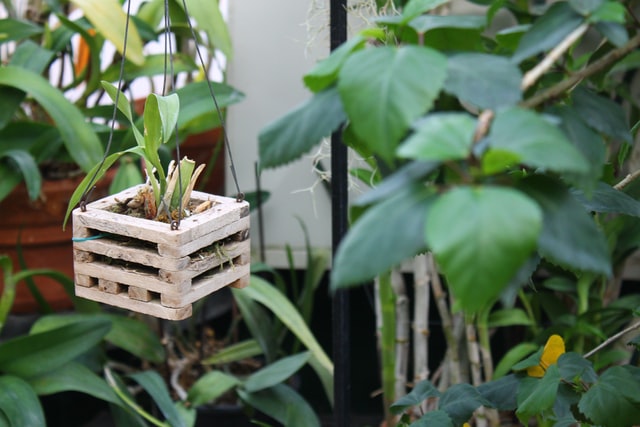Plantfluencers are Changing the Game
October 4, 2021
When Instagram was created in 2010, its founders Mike Krieger and Kevin Systrom intended for the platform to be used as a photography and videography sharing site. Over 10 years since then, Instagram has branched off into not just a popular app, but a social network. People are able to follow creators that produce content to their liking, whether it be frogs, woodwork, or 80’s aesthetic. I, too, have cultivated a gratifying feed of influencers to which I could endlessly scroll. But unlike the typical teenager’s celebrity idol, I follow “plantfluencers”.
Plantfluencers can be described as (mostly) millennials who have dedicated their entire social media page to the beautiful hobby of gardening. Houseplants, once only popular to a niche audience, are now gaining more traction on not just Instagram, but YouTube and TikTok as well. More young people are catching onto the allure of plants. Perhaps after seeing @craigmilran‘s lush jungle flat or successfully growing their first succulent, many have become hooked on. Photo courtesy of @craigmilran on Instagram.
I fall in the latter group, gaining my obsession organically and learning gaining appreciation for the community online. Distance learning left me with an abundance in free time and an air of whimsicalness of which I spent obsessing over my leafy children and devouring all the plant related content the internet has to offer. Harli G, benjiplant, and Summer Rayne Oakes are some YouTube channels that I found inspiration from. Each offers foliage themed content, yet are gratifying in their own way. Their vlogs don’t just idolize their jungle homes; they detail the painstaking work that goes into maintaining it.
As obvious as it may seem, with dirt comes a host of problems. A lot of problems. Plants can become susceptible to disease or pests and require repotting once a year. Not to mention the occasional task of fertilizing and pruning. But, as plant lovers have discovered, it’s all worth it. The absolute pride when a “rehabbing” stump, deemed dead, grows it’s first leaves. Or just the general feeling of pleasure as glossy new leaves emerge.
“Plants give me a lot of happiness through just being there,” said sophomore Jacob Lee. “Plants are great listeners and sometimes taking care of them calms me down.”
Jacob has been satisfying his ardor for plants by frequently visiting nearby garden centers and nurseries. His favorite go-to places include farmers’ markets and Home Depot.
Jacob isn’t the only student who has an affinity for gardening. I interviewed up-and-coming plantfluencer Jerry Dong on his take on the ever growing popularity and relevance of the plant community. Dong, who is 15-years-old, goes by @_the_plant_insider_ on Instagram, which has grown from 900 to over 7,000 followers in just a year.
“I started my plant account because I didn’t want to clog up my main account with my plant pictures, and I wanted a place to document their growth,” he said. “I had no idea that it would get to where it is now.”
Dong’s page features raw photos of rare plants against the same beige backdrop. And I don’t use the term “rare” lightly. The plants he owns fetch high price tags on tropical garden sites. His personal specimens, which some may argue should belong in botanical gardens, were acquired through purchases or plant swaps with others.
“The thing that inspired me the most to get into rare plants was finding sport variegated plants,” said Dong.
As a translation for those who don’t know the plant lingo, a sport variegated plant is one that has a genetic mutation that causes it to have streaks or blotches of a paler color, which is essentially localized albinism. Since the mutation is completely random, finding one is extremely uncommon, hence their rarity and cost. The new fad known as sport hunting has encouraged exclusivity-seekers to check their local garden centers and supermarkets for plants with variegation on them. The trend has people excitedly posting their finds on Facebook groups and under Instagram hashtag #sportvariegation. Scientist and botanist Tyler Thrasher has written a guide on finding sport variegated Monstera Deliciosas, pictured here. Photo courtesy of tylerthrasher.com.
While the renewed interest in plants has been great for longtime foliage enthusiasts, it has also given way to insane prices for highly sought-after plants. The sudden surge in demand has historians comparing houseplants to the Dutch Tulip Mania, when the Dutch economy literally collapsed after tulip bulbs were used in the form of currency. One very popular example early in the craze was the price of ‘Pink Princess’ Philodendrons. Back in the 1970s, when it was first introduced to the market, the plant was sold for $6. At the peak of its popularity, around mid-2020, cuttings with one growth point (some without leaves) could cost up to $400.
The rapid accumulation of plants around the house has also left some plant lovers with a burnout.
“Having plants around definitely boosts my mental health but I’ve found that there’s a limit on how many plants you can have before it starts becoming draining. Especially on watering days,” said Dong.
According to Dong, he has around 170 plants. Similarly with all things in life, the plant hobby is one that should be explored in moderation. Major plantfluencers have been exploring the lesser discussed side of the obsession. The focus on mental health and stability is a major theme being discussed. Sometimes collecting for the sake of having an Instagram worthy collection can do more harm than good. Passionately caring for just a few plants that matter is sure to bring happiness.
Photo courtesy of Nicholas Green on UNSPLASH.COM

